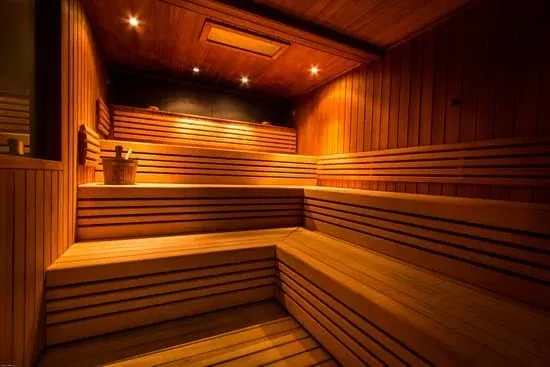Breathwork Techniques for Enhanced Sauna Experience

The marriage of breathwork and sauna therapy creates one of the most powerful wellness combinations available to modern practitioners. While heat therapy alone offers impressive physical and mental benefits, the intentional integration of breathing techniques amplifies these effects exponentially, creating a holistic experience that addresses stress, inflammation, and emotional well-being at their roots.
Understanding how to breathe properly in the sauna isn't just about comfort—it's about unlocking the full therapeutic potential of heat exposure. The right breathing patterns can help you stay in the sauna longer, achieve deeper relaxation, and activate healing responses that extend far beyond your session. Whether you're new to thermal therapy or seeking to deepen your existing practice, mastering sauna breathwork will transform your experience.
Modern infrared technology has made heat therapy more accessible than ever. Advanced dynamic infrared sauna systems provide consistent, controllable heat that creates an ideal environment for practicing breathwork techniques. These systems allow you to maintain optimal temperatures for extended breathwork sessions without the intensity of traditional high-heat saunas.
The Physiology of Breathing in Heat
When you enter a heated environment, your body initiates several automatic respiratory adjustments. Your breathing rate typically increases as your body works to cool itself through respiration. This natural response, while protective, can sometimes trigger anxiety or discomfort if not properly managed.
Research published in the Journal of Applied Physiology demonstrates that controlled breathing in heated environments can modulate the cardiovascular stress response, allowing practitioners to maintain comfortable heart rates even during extended heat exposure. This physiological control is the foundation of effective sauna breathwork.
The heat causes peripheral vasodilation—your blood vessels expand, particularly near the skin's surface. This increases blood flow and can initially create a sensation of breathlessness. By implementing structured breathing patterns, you override this automatic response and activate the parasympathetic nervous system, creating calm even as your body temperature rises.
Essential Breathwork Techniques for Sauna Practice
1. Box Breathing (Sama Vritti)
Box breathing is the perfect entry point for beginners. This technique, used by Navy SEALs to maintain calm under pressure, creates a rhythmic pattern that grounds you in the present moment.
Box Breathing Protocol:
- Inhale through your nose for 4 counts
- Hold your breath for 4 counts
- Exhale through your nose for 4 counts
- Hold empty for 4 counts
- Repeat for 5-10 minutes
In the sauna, this pattern helps regulate your body's response to heat. The holds between breaths allow you to observe sensations without reactivity, building tolerance and awareness. Start with a 4-count, but as you become more comfortable, you can extend to 5 or 6 counts.
2. Wim Hof Method (Modified for Sauna)
The Wim Hof Method has gained widespread recognition for its ability to influence the autonomic nervous system. While the full protocol involves cold exposure, the breathing component adapts beautifully to sauna practice.
Important Note: This technique should only be practiced while seated or lying down due to the possibility of lightheadedness.
- Round 1: Take 30-40 deep breaths, inhaling fully through the nose and exhaling passively through the mouth. Think "breathe in fully, let go" rather than forcing the exhale.
- Retention: After the last exhale, hold your breath for as long as comfortable (typically 1-2 minutes for beginners).
- Recovery Breath: Inhale fully and hold for 15 seconds.
- Repeat: Complete 2-3 rounds total.
This technique creates a temporary state of controlled hypoxia that, according to research in the Proceedings of the National Academy of Sciences, can voluntarily influence the autonomic nervous system and immune response. Combined with heat, it becomes a powerful tool for building resilience.

3. Alternate Nostril Breathing (Nadi Shodhana)
This ancient yogic technique balances the left and right hemispheres of the brain, creating mental equilibrium alongside physical relaxation.
Technique:
- Use your right thumb to close your right nostril
- Inhale through the left nostril for 4 counts
- Close both nostrils and hold for 4 counts
- Release the right nostril and exhale for 4 counts
- Inhale through the right nostril for 4 counts
- Close both and hold for 4 counts
- Release left and exhale for 4 counts
- This completes one full round—repeat 5-10 times
Many practitioners find this technique particularly effective for evening sauna sessions, as it promotes deep relaxation and prepares the body for restful sleep. It pairs wonderfully with the practices described in our guide to sauna meditation for deep relaxation.
4. 4-7-8 Breathing (Relaxation Breath)
Developed by Dr. Andrew Weil, this technique acts as a natural tranquilizer for the nervous system. It's especially valuable if you're using the sauna for stress relief or anxiety management.
Protocol:
- Exhale completely through your mouth, making a whoosh sound
- Close your mouth and inhale quietly through your nose for 4 counts
- Hold your breath for 7 counts
- Exhale completely through your mouth for 8 counts
- Repeat the cycle 4 times minimum
The extended exhale activates the vagus nerve, triggering the parasympathetic response. In the heat, this creates a profound sense of letting go—both of physical tension and mental stress.
Integrating Breathwork with Heat Cycles
One of the most effective approaches to sauna breathwork involves coordinating your breathing practice with your heat exposure cycles. This structured approach maximizes both cardiovascular conditioning and nervous system training.
The Progressive Heat and Breath Protocol
| Phase | Duration | Temperature | Breath Technique | Purpose |
|---|---|---|---|---|
| Warm-Up | 5 minutes | 130-140°F | Natural breathing | Acclimation and presence |
| Building Heat | 10 minutes | 150-160°F | Box breathing | Establishing rhythm and control |
| Peak Intensity | 5-10 minutes | 160-170°F | 4-7-8 breathing | Deep relaxation in intensity |
| Cool Down | 5 minutes | Outside sauna | Alternate nostril | Integration and balance |
This progression teaches your nervous system to maintain calm during escalating challenge—a skill that translates directly to managing stress in daily life.
Common Mistakes and How to Avoid Them
Even experienced practitioners can fall into patterns that diminish the effectiveness of sauna breathwork. Here are the most common pitfalls and their solutions:
Mistake 1: Forcing the Breath
Many beginners try too hard, creating tension rather than relaxation. The breath should feel effortless, even when following a structured pattern. If you're straining, reduce the count or take a break.
Mistake 2: Mouth Breathing Too Soon
While mouth breathing becomes necessary at higher temperatures, maintaining nasal breathing as long as possible optimizes the experience. The nose filters, warms, and humidifies air, protecting your respiratory system.
Mistake 3: Ignoring Your Body's Signals
Breathwork should never override safety signals. If you feel dizzy, nauseous, or excessively uncomfortable, exit the sauna immediately. Building tolerance is a gradual process that requires respect for your current capacity.
Mistake 4: Inconsistent Practice
Like any skill, breathwork in the sauna improves with regular practice. Sporadic sessions won't build the adaptations that make the practice truly transformative. Aim for at least 2-3 sessions weekly.
"Breath is the bridge which connects life to consciousness, which unites your body to your thoughts. Whenever your mind becomes scattered, use your breath as the means to take hold of your mind again." — Thích Nhất Hạnh, Plum Village
Scientific Benefits of Sauna Breathwork
The combination of heat and controlled breathing creates measurable changes in physiology that extend far beyond subjective feelings of relaxation.
Cardiovascular Improvements
A study published in the Journal of the American Heart Association found that regular sauna use reduces the risk of cardiovascular disease and all-cause mortality. When combined with breathwork that improves heart rate variability, these benefits compound.
Immune System Enhancement
The temporary stress of heat exposure followed by breathwork-induced relaxation creates a hormetic effect—mild stress that strengthens overall resilience. White blood cell production increases, and immune surveillance improves.
Neuroplasticity and Mental Health
Heat stress combined with focused breathing practice activates brain-derived neurotrophic factor (BDNF), a protein crucial for learning, memory, and mood regulation. Regular practitioners often report enhanced mental clarity and reduced symptoms of depression.
Detoxification Pathways
Deep breathing enhances lymphatic circulation, while sweating removes toxins through the skin. Together, these processes support the body's natural detoxification systems more effectively than either practice alone.
Advanced Techniques for Experienced Practitioners
Once you've mastered the foundational techniques, several advanced practices can deepen your sauna breathwork experience.
Breath Retention Training
Progressive breath holds in the heat build incredible mental fortitude. Start with comfortable holds after exhale (10-30 seconds), gradually extending as your capacity increases. This trains your tolerance for CO2, which research suggests correlates with reduced anxiety and improved stress resilience.
Pranayama Integration
Classical yogic breathing techniques like Kapalabhati (skull-shining breath) and Bhastrika (bellows breath) can be practiced in moderate heat, though they require supervision and experience. These energizing practices create a different effect than the relaxation-focused techniques, offering versatility in your practice.
Visualization and Breath
Combining breathwork with visualization amplifies the meditative aspects of sauna practice. As explored in our article on thermal mindfulness, imagining the breath as colored light flowing through your body creates powerful mind-body integration.
Creating Your Personal Practice
The most effective breathwork practice is one you'll actually maintain. Here's how to design a sustainable routine that fits your lifestyle and goals.
For Stress Relief and Relaxation
- Frequency: 3-4 times weekly, evening sessions
- Duration: 20-25 minutes
- Temperature: 140-160°F
- Primary Technique: 4-7-8 breathing and box breathing
- Secondary Practice: Alternate nostril breathing during cool-down
For Performance and Mental Clarity
- Frequency: 4-5 times weekly, morning sessions
- Duration: 15-20 minutes
- Temperature: 160-180°F
- Primary Technique: Modified Wim Hof breathing
- Secondary Practice: Brief breath holds to build CO2 tolerance
For Spiritual Development
- Frequency: Daily if possible
- Duration: 30-40 minutes
- Temperature: 130-150°F (lower for longer sessions)
- Primary Technique: Natural breathing with meditation
- Secondary Practice: Alternate nostril breathing and visualization
Safety Guidelines and Contraindications
While breathwork in the sauna offers tremendous benefits, certain precautions ensure safe practice:
- Never practice intense breathwork (like Wim Hof method) standing up – always be seated or lying down
- Avoid breathwork in the sauna if you're pregnant without medical clearance
- Those with cardiovascular conditions should consult their healthcare provider before combining intense heat and breathwork
- Stay well hydrated – drink water before, during (if needed), and after sessions
- Start conservatively with lower temperatures and shorter durations
- Exit immediately if you experience dizziness, chest pain, or severe discomfort
Frequently Asked Questions
Conclusion: The Breath as Your Anchor
Breathwork transforms sauna therapy from a passive heat experience into an active practice of self-mastery and healing. By learning to control your breath in the challenging environment of heat, you develop skills that serve you throughout life—the ability to remain calm under pressure, to find peace in discomfort, to trust your body's wisdom.
Start simply with box breathing or the 4-7-8 technique. As these patterns become second nature, explore more advanced practices. The journey from beginner to advanced practitioner isn't about complexity—it's about depth, consistency, and the willingness to sit with sensation without reactivity.
Your breath is always with you, always available as a tool for transformation. In the sauna, you learn to wield this tool with precision and grace. Take what you learn in the heat and carry it into your daily life. This is the true gift of sauna breathwork—not just minutes of relaxation, but a lifelong practice of presence, resilience, and inner peace.
References
- Journal of Applied Physiology. (2018). "Cardiovascular and thermoregulatory control during whole body heating in humans." https://www.physiology.org/doi/full/10.1152/japplphysiol.00446.2018
- Proceedings of the National Academy of Sciences. (2014). "Voluntary activation of the sympathetic nervous system and attenuation of the innate immune response in humans." https://www.pnas.org/doi/full/10.1073/pnas.1322174111
- Journal of the American Heart Association. (2018). "Sauna bathing is associated with reduced cardiovascular mortality." https://www.ahajournals.org/doi/10.1161/JAHA.117.006884
- Frontiers in Psychology. (2017). "The Effect of Diaphragmatic Breathing on Attention, Negative Affect and Stress." https://www.frontiersin.org/articles/10.3389/fpsyg.2017.00874/full
- Plum Village. "Thích Nhất Hạnh Biography." https://plumvillage.org/about/thich-nhat-hanh/biography/

